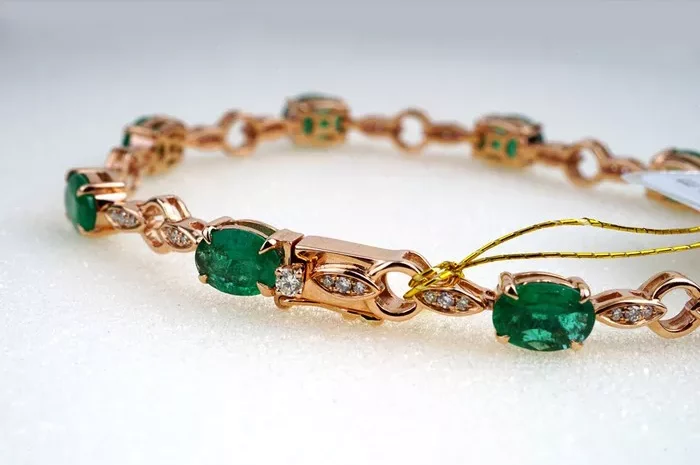When it comes to precious gemstones, few rival the allure and timeless elegance of emeralds and diamonds. Both gems have captivated humanity for centuries with their beauty, but how do they stack up in terms of cost? While diamonds have long been regarded as the pinnacle of luxury, emeralds hold their own unique charm and rarity that make them equally desirable—if not more so—in the eyes of many collectors and connoisseurs. In this article, we delve into the intricacies of comparing the expense of emeralds to diamonds, exploring factors such as rarity, quality considerations, cut differences, carat weight, and overall industry impact.
Comparison of Rarity
Emeralds, with their mesmerizing green hues, are renowned for their scarcity. Approximately 20 times rarer than diamonds, emeralds stand out due to their limited availability in nature. The geological conditions necessary for the formation of emeralds are highly specific, contributing to their rarity compared to diamonds, which are more abundant in the Earth’s crust.
Rarity plays a significant role in pricing gemstones. The limited supply of emeralds drives up their value, making them highly sought after by collectors and connoisseurs alike. This rarity factor adds to the mystique surrounding emeralds and elevates their status in the world of fine jewelry.
Quality Considerations
The cost comparison between emeralds and diamonds hinges largely on the quality of each gemstone. The standard criteria for evaluating gemstones, known as the 4Cs—color, clarity, cut, and carat weight—serve as essential benchmarks in determining their value.
Emeralds are primarily evaluated based on their green color, with intensity and tone being key factors in determining quality. Unlike diamonds, which are prized for their lack of color, emeralds are valued for their vibrant hues ranging from velvety green to bluish-green. Additionally, emeralds are graded without magnification for clarity, with inclusions often considered part of their character rather than flaws. In contrast, diamonds are graded at 10x magnification for clarity, with the presence of inclusions affecting their transparency and brilliance.
In terms of clarity, colored gemstones like emeralds are categorized into three types: Type I, Type II, and Type III. Type I emeralds typically have few inclusions visible to the naked eye and are considered the most valuable. Type II emeralds may contain more noticeable inclusions, while Type III emeralds exhibit significant inclusions that can impact their transparency and overall beauty. These distinctions in clarity types can significantly influence the pricing of emeralds based on their rarity and visual appeal.
Cut Differences
The cut of a gemstone plays a crucial role in its overall appearance and value. Diamonds benefit from well-cut facets that enhance their sparkle and brilliance. In contrast, emeralds are often cut to preserve weight while maintaining an ideal cut that maximizes their color and minimizes the visibility of inclusions.
The cut of an emerald may appear irregular compared to the precision-cut facets of a diamond. This is due to the differing optical properties of each gemstone, with emeralds requiring a specific cut to enhance their color and minimize the appearance of imperfections.
Carat Weight
Carat weight serves as a gauge of rarity for both emeralds and diamonds. Larger gemstones are inherently more scarce and command higher prices, all else being equal. The pricing of emeralds and diamonds is influenced by their carat weight, with larger stones fetching premium prices due to their rarity.
However, it’s essential to note that carat weight alone does not determine a gemstone’s value. Factors such as color, clarity, and cut also play significant roles in determining the overall quality and price of the stone.
Overall Rarity and Industry Impact
Despite the dominance of diamonds in the precious gem industry, emeralds hold their own as coveted treasures sought after by collectors and enthusiasts worldwide. While diamonds alone account for half of the entire precious gem industry, the rarity of emeralds makes them even more exceptional in comparison. Their scarcity, coupled with their timeless beauty and cultural significance, ensures that emeralds remain highly prized among discerning buyers and investors.
It is worth noting that while white diamonds may dominate the market, fancy colored diamonds, such as the legendary Tiffany Diamond, are exceptions to this trend. These rare gems, with their striking hues ranging from vivid yellows to deep blues, command astronomical prices at auction and are cherished as symbols of luxury and prestige.
In conclusion, the expense of emeralds compared to diamonds is influenced by a myriad of factors, including rarity, quality considerations, cut differences, and carat weight. While diamonds have long been synonymous with luxury and wealth, emeralds offer a unique allure that appeals to those seeking something truly extraordinary. Whether adorning a piece of jewelry or adorning the pages of history, both emeralds and diamonds continue to captivate and inspire, serving as timeless symbols of beauty and refinement in a world enamored with precious gemstones.


